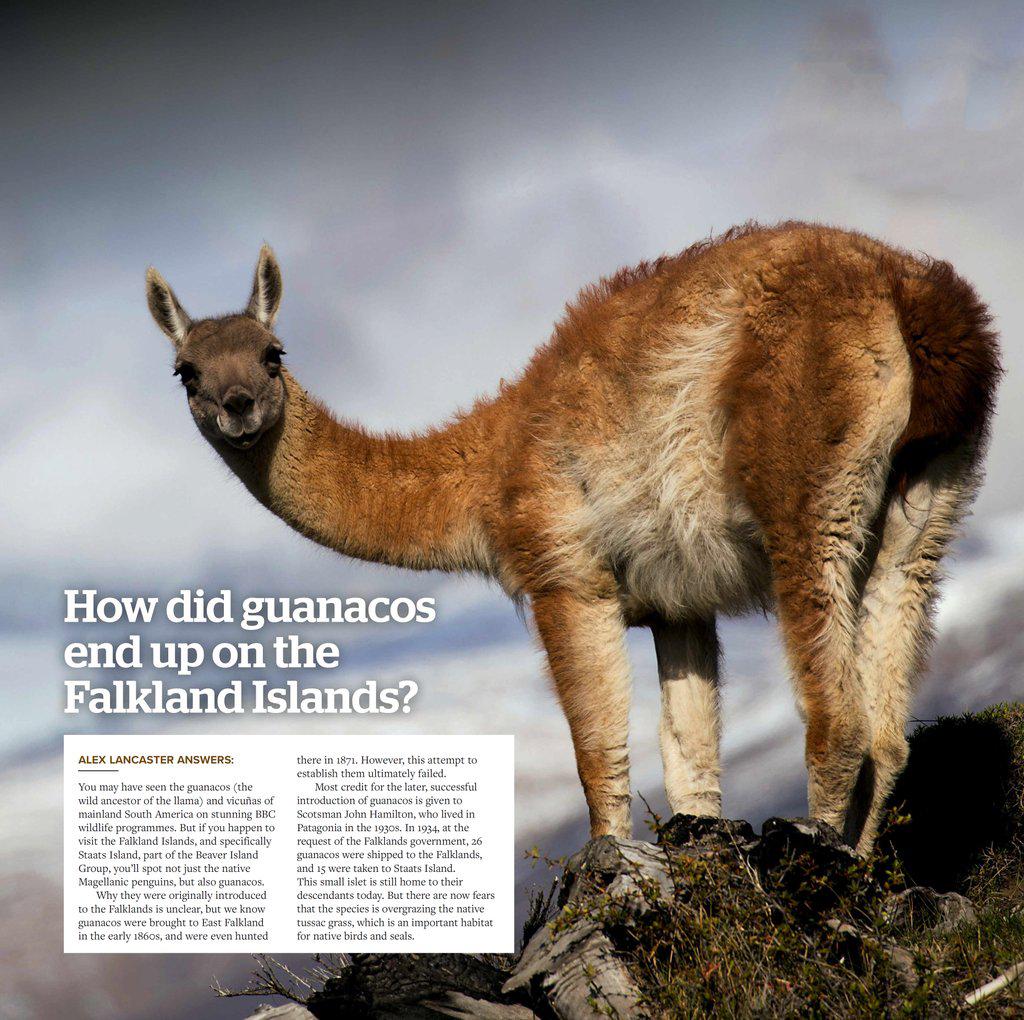
Email your questions to wildquestions@immediate.co.uk
How did guanacos end up on the Falkland Islands?
ALEX LANCASTER ANSWERS:
You may have seen the guanacos (the wild ancestor of the llama) and vicuñas of mainland South America on stunning BBC wildlife programmes. But if you happen to visit the Falkland Islands, and specifically Staats Island, part of the Beaver Island Group, you’ll spot not just the native Magellanic penguins, but also guanacos.
Why they were originally introduced to the Falklands is unclear, but we know guanacos were brought to East Falkland in the early 1860s, and were even hunted there in 1871. However, this attempt to establish them ultimately failed.
Most credit for the later, successful introduction of guanacos is given to






